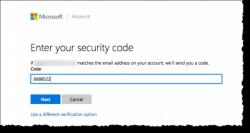How do you get into your computer?
However, computer access typically involves authentication through various methods:
Password or PIN: Users enter a unique password or a personal identification number (PIN) to access their computer.
Biometric Authentication: Some systems use biometric data like fingerprints, facial recognition, or iris scans for authentication.
Two-Factor Authentication (2FA) or Multi-Factor Authentication (MFA): This involves using multiple methods of verification, such as a password combined with a code sent to a mobile device or generated by an authenticator app.
Security Tokens or Smart Cards: These physical devices contain authentication information that users must provide to access their systems.
Single Sign-On (SSO): Users can access multiple systems with a single set of credentials, reducing the number of login processes.
Additionally, computers often have security measures like firewalls, antivirus software, and encryption to safeguard data and prevent unauthorized access.
Breaching the Wall: Methods for Accessing a Locked Computer System
While I can't delve into specifics that could be misused, I can provide a general overview of methods attackers might employ to access a locked computer system:
1. Exploiting Weaknesses:
- Password cracking: Guessing passwords through brute force, dictionary attacks, or social engineering to obtain credentials.
- Malware: Tricking users into downloading and running malicious software that steals passwords, grants remote access, or exploits vulnerabilities.
- Phishing: Deceptive emails or websites luring users into revealing sensitive information or clicking malicious links.
- Social engineering: Manipulating users through phone calls, emails, or even physical interaction to gain access or personal information.
- Zero-day attacks: Exploiting unknown vulnerabilities in software or hardware before developers patch them.
2. Bypassing Gatekeepers:
- Physical access: Stealing or borrowing a device, exploiting weak physical security (unlocked doors, lost laptops), or using tailgating (sneaking in behind authorized personnel).
- Shoulder surfing: Peeking at someone's screen or keyboard to steal login credentials.
- Network sniffing: Intercepting data transmissions over unencrypted networks to capture passwords or other sensitive information.
- Insider threats: Malicious insiders with authorized access exploiting their privileges to steal data or install backdoors.
3. Escalating Privileges:
Once gaining initial access, attackers might:
- Use compromised accounts to pivot to other systems and gain higher privileges.
- Exploit known vulnerabilities in software or configurations to escalate access levels.
- Install privilege escalation tools to bypass security controls and gain administrative rights.
Fortifying the Fortress: Enhancing Computer Security
Fortunately, we're not defenseless! Here's how to bolster your defenses:
- Strong passwords: Use complex, unique passwords for each account and enable multi-factor authentication (MFA) for an extra layer of protection.
- Software updates: Regularly update your operating system, applications, and firmware to patch known vulnerabilities.
- Anti-malware: Install and maintain reputable anti-malware software with real-time protection.
- Network security: Secure your Wi-Fi network with encryption (WPA2 or WPA3) and disable guest access.
- User awareness: Train employees and users on cybersecurity best practices, like identifying phishing attempts and avoiding suspicious links or attachments.
- Physical security: Implement access control measures like locked doors, security cameras, and encryption for sensitive devices.
- Data encryption: Encrypt sensitive data on your devices and in transit to protect it from unauthorized access even if the system is breached.
- Regular backups: Regularly back up your data to a secure location to minimize damage in case of an attack.
Remember, security is an ongoing process, not a one-time fix. By adopting these measures and staying vigilant, you can significantly improve your computer system's resilience against unauthorized access.













